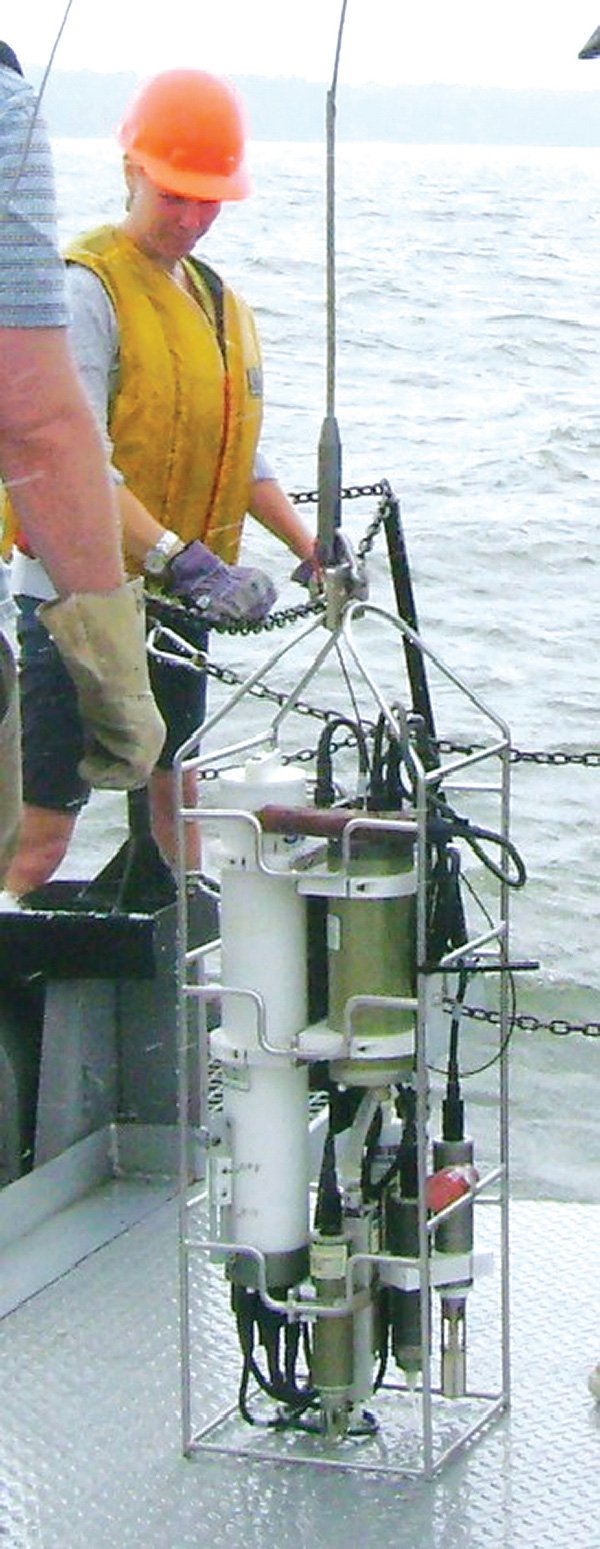SPRINGDALE— Merri Herndon said her students will learn about oceanography in a more personalized and hands-on way because of a workshop she attended this month.
Herndon, a sixth-grade science teacher at Tyson Middle School, attended the Maury Project Workshop July 7-19 at the U.S. Naval Academy in Annapolis, Md., she said. She was the only Arkansas teacher of 24 at the workshop. The workshop focused on ways to integrate oceanography into other classroom lessons, Herndon said.
At A Glance
The Maury Project
The Maury Project is a program for teachers sponsored the American Meteorological Society. Its main goal is to help teachers be more effective in educating students about oceanography. The program was named after Matthew Maury who is considered the founder of oceanography.
Source: ametsoc.org
The teachers spent 60 percent of the workshop in a graduate-level lecture class and the rest of the time working on classroom activities that can be implemented during the school year, Herndon said. Participants also visited the National Weather Center to see how forecasts are made and went on a research vessel in the Chesapeake Bay, she said.
One project she wants to share with her class is about water density, Herndon said. The project involves a fish tank, four colored dyes, hot salt water, cold salt water, hot fresh water and cold fresh water. Each type of water is dyed a different color and put in the same tank to see how they separate into layers based on density, she said.
She also plans to explain to her students that pollutants in the ocean affect them even though they don’t live near the coast, Herndon said. Pollutants in the ocean get eaten by fish, and people all over the country eat those fish and ingest those pollutants.
“Adding that one little element lets students see what’s happening in the global arena,” she said.
These lessons are important for students — even those who live far from the ocean — because oceanography also involves the weather, said Andrew Muller, associate professor of oceanography at the U.S. Naval Academy. Inland states are affected by the ocean because temperature differences in the water affect the pattern of jet streams in the atmosphere, which carry weather to different parts of the world. Jet streams can carry weather patterns that create tornadoes or thunderstorms in states such as Arkansas, he said.
Learning about oceanography can also help students connect earth science – taught in sixth grade in Arkansas – to other sciences such as chemistry and biology, said Tim Atkinson, president of the Arkansas Science and Technology Authority. Oceanography can connect the physical science of the ocean with the biology of the organisms that live in that environment.
“It gets (students) interested in where the sciences come together,” he said.
The workshop is in its 20th year and is operated as a partnership between the Naval Academy and the American Meteorological Society, Muller said. It’s paid for by the Navy, National Oceanic and Atmospheric Administration and American Meteorological Society.
Science teachers and supervisors worldwide are able to apply for the workshop, Muller said. He didn’t know how many apply each year, but the workshop can accommodate 23 to 25 participants and usually has a waiting list.
The workshop is free to participants, Muller said. The Maury Project pays expenses for the workshop and gives each participant a $600 stipend to spend on visits to area tourist sites. Participants also have the opportunity to get three hours of graduate credit through the workshop if they teach at least two training classes about oceanography for other teachers during the school year, he said.
Herndon said she plans to teach two to five training courses. She wants the first class to be for teachers in Springdale, then wants to include teachers elsewhere in Arkansas. She said she also wants to look into teaching some of the lessons at education conferences in the state.
A message left for the Maury Project co-director was not returned by 5 p.m. Monday.

